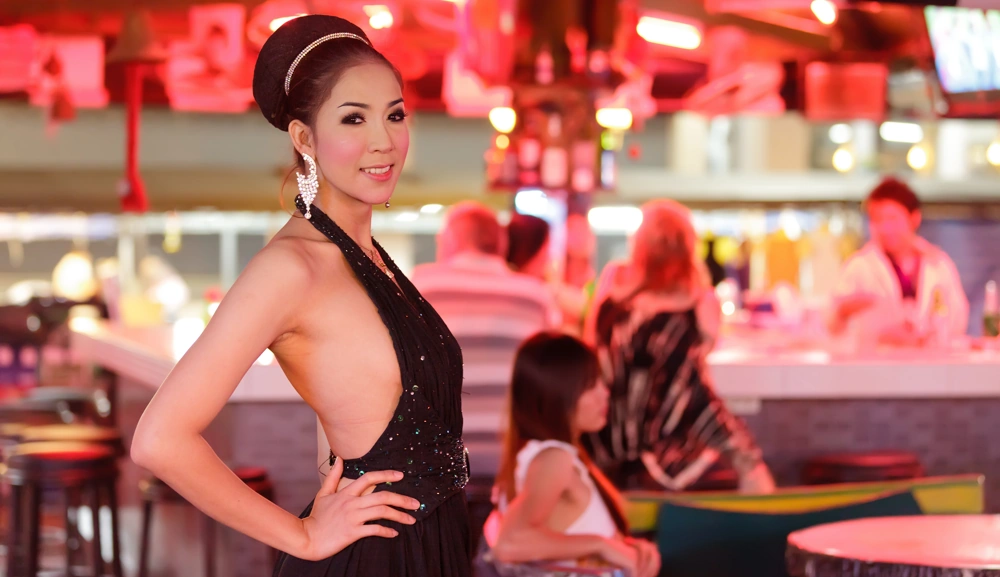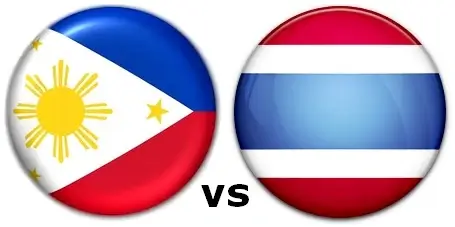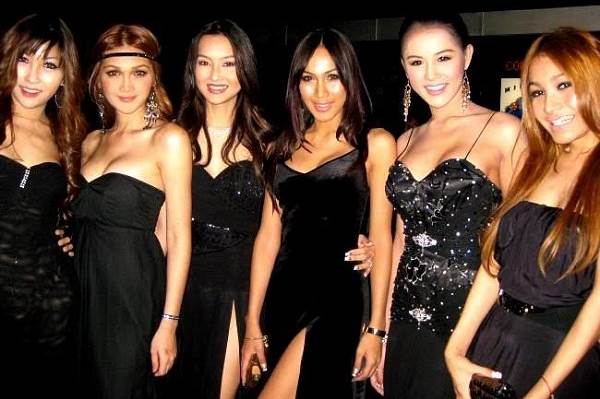Did you know that ladyboys are a prominent part of transgender culture in Asia, particularly in Thailand and the Philippines? In fact, Thailand is known as the "Land of Smiles" and the "Land of Ladyboys," while the Philippines is home to a thriving ladyboy community as well. But have you ever wondered which country comes out on top in the ladyboy showdown? In this article, we will explore the world of ladyboys in Thailand and the Philippines, compare their lifestyles, and determine who wins the crown in this fascinating cultural phenomenon.
Ladyboys are not just a curiosity or a spectacle, but a vibrant and integral part of the transgender community in Asia. They are celebrated for their unique beauty, style, and culture, and have become a popular attraction for tourists and locals alike. But despite their popularity, there are notable differences in the ladyboy culture, beliefs, and perceptions between Thailand and the Philippines. So, whether you are a seasoned traveler or simply curious about this fascinating subculture, join us as we delve into the world of ladyboys and discover which country reigns supreme in the Ladyboy showdown.

The Fascination with Ladyboys in Thailand and the Philippines
The enchanting world of these captivating individuals draws you in, as their beauty and charm captivate hearts across cultural and societal barriers. Ladyboys are a common sight in both Thailand and the Philippines, and their presence has become a source of fascination for people around the world. Transgender women are celebrated for their beauty, with many aspiring to join beauty pageants like Miss Tiffany Universe that attract tourists in both countries.
Thailand, known for having the world's highest transgender and ladyboy population, shares this allure with the Philippines, a country with a thriving, well-accepted trans community despite religious constraints. Ladyboys in the Philippines are more accustomed to Western culture and can speak excellent English, making them more accessible to foreign visitors interested in meeting them.
The fascination with Thai and Filipino ladyboys goes beyond beauty and charm; they symbolize acceptance and inclusivity while contributing to society. The complex origins of ladyboy culture in these countries intertwine with their histories and cultures, making them even more intriguing.

The Origins of Ladyboy Culture in Thailand and the Philippines
Let's take a trip back in time to explore the fascinating origins of the vibrant ladyboy culture found in Southeast Asia. Thailand has a long history of accepting transgender individuals, dating back to ancient times when they were revered for their spiritual abilities. In fact, some Thai kings had ladyboy partners and lovers. This acceptance is rooted in the country's Buddhist religion, which teaches compassion and acceptance of all beings. Similarly, in the Philippines, ladyboys have been present in the media and public scene for decades. The country's unique mix of cultures, due to colonization in the past centuries, has resulted in a variety of female beauty that is unmatched anywhere else in the world.
To truly understand the fascination with ladyboys in Thailand and the Philippines, it's important to understand the unique culture that has developed around them. In Thailand, ladyboys are widely accepted and respected and can be found in various professions, not just in red-light districts. Ladyboys may prefer to meet foreign men in person rather than online. In the Philippines, ladyboys are more accustomed to Western culture and mentality and can speak excellent English. Despite the country's conservative values, ladyboys are present in the media, appear in TV shows and comedies, and participate in prestigious transgender beauty contests every year.

Embracing Diversity: How Cultural Beliefs and Values Foster Acceptance in Thailand and the Philippines
Thailand and the Philippines embrace ladyboys, thanks to their societies' cultural beliefs and values. Buddhism's prevalence in Thailand and the Philippines' cultural diversity creates an environment where transgender individuals are accepted and celebrated. In contrast, in many Western countries, transgender individuals still face discrimination and stigma. The thriving ladyboy scene in Thailand and the Philippines is a testament to the power of acceptance and open-mindedness in creating a vibrant and diverse society. Now, let's explore the differences in the nightlife and entertainment scenes in these two countries.
The Thriving Ladyboy Scene: Comparing Nightlife and Entertainment
The flourishing ladyboy fun and frolics scene in these two Southeast Asian countries is a feast for the senses and a celebration of diversity. In Thailand, famous cities like Bangkok, Pattaya, and Phuket offer spectacular ladyboy cabaret shows, exclusive bars, and bustling red-light districts where tourists and locals connect with the transgender community. The nightlife in these two cities is vibrant and diverse, with many venues catering specifically to the transgender community.
In the Philippines, the ladyboy scene is not as prominent as in Thailand, but it is still a thriving part of the country's nightlife. Ladyboys are a common sight on the streets, in shopping malls, and at lively nightspots in tourist towns like Angeles City and Manila in the Philippines. The country proudly hosts esteemed transgender beauty contests, featuring ladyboys in comedy shows, TV series, and films, showcasing their talents and increasing visibility. The nightlife in the Philippines is not as explicit as in Thailand, but it is still an exciting and safe way to enjoy the company of transgender women.
| Pro Tip: |
|---|
| If you're curious about exploring the nightlife in Bangkok, don't miss our list of 5 of the Best Ladyboys Bars in Bangkok. Discover the top spots to mingle with fabulous ladyboys and create unforgettable memories! |
Embracing the Vibrant Ladyboy Nightlife: A Must-Experience Adventure in Southeast Asia
Tourists looking for a unique and exciting experience should not miss the opportunity to explore the ladyboy nightlife in both Thailand and the Philippines. The transgender community in these countries is vibrant, diverse, and proud of its identity. Whether you are looking for a wild night out in Bangkok or a relaxed evening in Makati, you will find plenty of venues and events that cater to your interests. The ladyboy scene in both countries is a reflection of their open-mindedness and acceptance of diversity, making it a must-see for anyone visiting Southeast Asia.
As you can see, the transsexual scene in both Thailand and the Philippines is thriving and diverse. While Thailand may have more explicit and well-known nightlife venues, the Philippines offers a unique and more laid-back experience. Regardless of which country you choose to explore, you will be welcomed with open arms by the transgender community. In the next section, we will look at how society views and accepts ladyboys in Thailand and the Philippines.

Transgender Acceptance: A Look at Society's View on Thai and Filipina Ladyboys
Explore Thai and Filipina ladyboys' societal views and acceptance, and learn about their daily life challenges and successes. Society's view on transgender individuals varies greatly between Thailand and the Philippines, despite both countries having a large ladyboy population. Here are some key differences:
- Thai culture, predominantly Buddhist, embraces ladyboys as a third gender, fostering widespread acceptance. Ladyboys have access to most professional domains in Thailand and are not ashamed to have a ladyboy in the family. In contrast, the Philippines' strong Roman Catholic influence creates a more conservative environment, making acceptance more challenging for ladyboys.
- Thai ladyboys enjoy respect and acceptance thanks to their naturally feminine features, while Filipina counterparts may struggle more to gain acceptance. However, Filipina ladyboys are more accustomed to Western culture and mentality and can speak English fluently, making them more appealing to foreigners.
- Ladyboys may face discrimination and prejudice in both countries, but the level of acceptance varies greatly depending on the region. In Thailand, beauty pageants celebrate ladyboys, attracting tourists, while the Philippines finds them more commonly in nightlife and red light districts.
Wrapping Up: Appreciating the Unique Beauty and Acceptance of Ladyboys in Thailand and the Philippines
In conclusion, while both Thailand and the Philippines have a thriving ladyboy scene, society's view on transgender individuals can vary greatly between the two countries. Thai Buddhist culture's acceptance contrasts with the Philippines' conservative Roman Catholic beliefs, which can create challenges for ladyboys. However, Filipina ladyboys' proficiency in English and familiarity with Western culture can make them more appealing to foreigners. Next, we'll explore the differences in beauty and style between Thai and Filipina ladyboys.
Beauty and Style: Differences Between Thai and Filipina Ladyboys
Be captivated by the unique beauty and style of Thai and Filipina ladyboys! Both are celebrated for their stunning beauty and femininity. However, there are slight differences in their overall look and fashion sense.
Thai ladyboys flaunt slender figures, long silky hair, and delicate facial features. They often wear tight-fitting and revealing clothing to showcase their bodies. Makeup is also an important part of their style, with many opting for heavy eye makeup and bold lipstick. Thai ladyboys tend to have a more exotic and glamorous appearance compared to Filipina ladyboys.
Filipina ladyboys, on the other hand, have a more natural and subtle style. They often have petite frames and soft facial features, with a tendency towards a sweeter and more innocent look. Their fashion sense is more conservative, with many opting for simple and modest clothing that still accentuates their curves. Makeup is also minimal, with a focus on enhancing their natural beauty.
In conclusion, both Thai and Filipina ladyboys have their own unique beauty and style. While Thai ladyboys tend to have a more exotic and glamorous appearance, Filipina ladyboys have a more natural and subtle look. Regardless of their differences, both are stunning and deserving of recognition. Now, let's uncover the dating scene and explore the attraction of ladyboys in Thailand and the Philippines.

Uncovering the Dating Scene: Attraction and Dating Ladyboys in Thailand and the Philippines
Now, let's explore dating and attraction to ladyboys in Thailand and the Philippines. When it comes to finding love, both countries offer unique experiences. Thai ladyboys, widely accepted and respected, often seek genuine relationships with men. They can be found in various professions, not just sex work. While some may prefer to meet foreign men in person rather than online, there are ladyboy dating sites like MyLadyboyCupid that can help connect you with a lot of ladyboys looking for a long-term relationship.
In the Philippines, ladyboys are also present in the media and public scene, and many are looking for love and long term relationship. However, the country's conservative values and strong ties to the Roman Catholic Church may make it more difficult to openly express one's attraction to ladyboys. Ladyboys in the Philippines are naturally petite and very passable as women, but they may have a different look compared to their sisters from Thailand. Nonetheless, ladyboys in both countries are incredibly beautiful and very passable as biological women.
No matter which country you choose to explore the dating scene for ladyboys, it's important to treat them with respect and as any other girl. Ladyboys are not a fetish or a novelty, but rather real people looking for love and companionship. So, whether you're in Thailand or the Philippines, take the time to get to know the ladyboys you meet. And be open to the unique experiences and perspectives they have to offer. Next, we'll explore the differences in language and communication between Thai and Filipina ladyboys.
| Pro Tip: |
|---|
| To improve your dating experience with ladyboys, check out our essential Ladyboy Dating Tips that'll help you navigate the dating world confidently and build lasting relationships. |
Thai vs. Filipina Ladyboys: Language and Communication Differences
Understanding the differences in language and communication between Thai and Filipina ladyboys is crucial in building a meaningful relationship with them. Although both countries have English as a second language, there are still some differences in how they speak and express themselves. Thai ladyboys tend to use more formal and polite language, while Filipina ladyboys are more casual and they speak very good English.
Another difference is in the use of slang and colloquial terms. Thai ladyboys may use more Thai words and phrases in their speech, while Filipina ladyboys tend to use more American slang and expressions. It's important to familiarize yourself with these differences to avoid miscommunication and misunderstandings.
Finally, cultural differences can also affect language and communication. Thai ladyboy culture values respect and hierarchy, which can affect how ladyboys speak and address others. Filipino culture, on the other hand, values directness and honesty, which can come across as blunt or rude to some. Understanding these cultural nuances can help you navigate the language and communication differences between Thai and Filipina ladyboys.
Now that you have a better understanding of the language and communication differences between Thai and Filipina ladyboys, it's time to learn how to flirt and attract them. Cultural tips for success will help you navigate the dating scene and build meaningful relationships with ladyboys.

How to Flirt and Attract Ladyboys: Cultural Tips for Success
Learn how to successfully flirt and attract ladyboys by understanding cultural tips that will help you navigate the dating scene and build meaningful relationships with them. And don't forget to use some charm and swag to show off your personality! Here are some tips to help you out:
- Respect their culture: Ladyboys in Thailand and the Philippines come from different backgrounds and cultures, so it's important to understand and respect their values. For example, in the Philippines, family is highly valued, so asking about their family and showing interest in their life can go a long way in building trust and respect.
- Be open-minded: Ladyboys are unique individuals who come in different shapes and sizes. Be open-minded and don't judge them based on their appearance or orientation. Show genuine interest in getting to know them and their story.
- Be confident: Confidence is key when it comes to flirting and attracting ladyboys. Show off your personality and let them see the real you. Don't be afraid to make the first move and be yourself.
- Be a gentleman: Ladyboys appreciate men who treat them with respect and kindness. Be a gentleman, open doors, pay for dinner, and show them that you care. These small gestures can make a big difference in building a strong connection.
By following these cultural tips, you can successfully flirt and attract ladyboys in Thailand and the Philippines. Remember to be respectful, open-minded, confident, and gentlemanly. Good luck on your dating journey!
Now that you have some cultural tips on how to flirt and attract ladyboys, you may still have some questions about them. In the next section, we'll answer some frequently asked questions about Thai and Filipina ladyboys to demystify any misconceptions and help you better understand them.
Frequently Asked Questions: Thai and Filipina Ladyboys Demystified
Find out the truth about Thai and Filipina ladyboys by reading our frequently asked questions section, and gain a deeper understanding and appreciation of these unique individuals. If you are wondering about the differences between ladyboys in Thailand and the Philippines, it is important to note that both countries have a high population of transgender individuals. However, the visibility and acceptance of ladyboys differ in each country.
To better understand the differences between Thai and Filipina ladyboys, the following table provides a side-by-side comparison. In Thailand, ladyboys are more widely accepted and respected in society due to the country's Buddhist beliefs and their naturally feminine features. Meanwhile, in the Philippines, ladyboys are present in the media and public scene, but the country's conservative values and Catholic beliefs can make it challenging for them to fully express themselves.
In conclusion, the visibility and acceptance of ladyboys vary in Thailand and the Philippines. While both countries have a high population of transgender individuals, societal norms and beliefs can impact the way they are perceived. It is important to treat ladyboys with respect and as any other individual, regardless of their gender identity. If you would like to meet ladyboys, online dating can be a great way to find your perfect match. Read on for tips on how to navigate the world of ladyboy dating.
| Thailand Ladyboys | Philippines Ladyboys |
|---|---|
| Widely accepted in society by Thai people | Present in media and public scene |
| Access to most professional domains | Conservative values and Catholic beliefs |
| Naturally feminine features | A petite and unique look |
| Pro Tip: |
|---|
| For a deeper understanding of ladyboys and their unique experiences, explore All You Need to Know About Ladyboys. This comprehensive guide will answer all your questions and satisfy your curiosity about the fascinating world of ladyboys. |
Online Dating in Asia: Finding Your Perfect Ladyboy Match
Discovering your ideal ladyboy match through online dating in Asia can be an excellent and sophisticated way to explore your attraction to transgender women. With the highest population of ladyboys in Thailand and a more Westernized approach in the Philippines, you have a wide range of options to choose from. Here are three key things to keep in mind when searching for your perfect match online:
- Look for ladyboys who have complete profiles with clear and recent photos. This will help you avoid scammers and people who are not serious about finding a real relationship.
- Be respectful and honest in your communication. Remember that ladyboys are looking for love and companionship just like anyone else, and they deserve to be treated with respect.
- Take the time to get to know your potential match before meeting in person. This will help you build a connection and ensure that you are both on the same page when it comes to expectations and desires.
Whether you are interested in ladyboys from Thailand or the Philippines, online dating can be a great way to find your perfect match. Just remember to be respectful, honest, and patient, and you are sure to find someone who shares your interests and desires.
As you navigate the world of online dating and explore your attraction to ladyboys in Asia, it's important to remember that their journey is not always easy. In the next section, we will delve deeper into the experiences of Thai and Filipina trans youth as they navigate their teenage years.
| Pro Tip: |
|---|
| Are you interested in meeting ladyboys from the Philippines? Visit our guide on How to Meet Ladyboys from the Philippines for valuable advice on making genuine connections with Filipina ladyboys. |
The Teenage Years: Understanding the Journey of Thai and Filipina Trans Youth
As we explore the journey of Thai and Filipina trans youth through their teenage years, it becomes clear that their experiences are anything but easy. Thai trans women face a society that is more accepting compared to the Philippines, but they still struggle with discrimination and stigmatization. On the other hand, Filipinos are more conservative and bound to their religious beliefs, making it harder for trans and transgender individuals to express themselves freely.
The journey of trans youth in Thailand and the Philippines is a challenging one. They face bullying, harassment, and discrimination both in and out of school. They also struggle with finding acceptance from their families, who may not understand or accept their gender identity. Despite these challenges, many trans youth are resilient and determined to live their lives authentically. They find support from each other and from the growing community of LGBTQ advocates in both countries.
The journey of trans youth in Thailand and the Philippines is an ongoing one, with many obstacles to overcome. However, with the support of their families, peers, and communities, they are slowly breaking down barriers and paving the way for a more accepting and inclusive future. As we move forward, it is important to continue advocating for the rights of trans and transgender individuals and to create a society where everyone can live freely and authentically. With this in mind, let's explore how gay culture and ladyboys coexist in Thailand and the Philippines.

Gay Culture and Ladyboys: How They Coexist in Thailand and the Philippines
Let's explore how gay culture and ladyboys coexist in Thailand and the Philippines. In Thailand, the widespread acceptance of the LGBT community embraces ladyboys as essential members. You'll frequently find ladyboys on TV shows, participating in beauty pageants, and performing in ladyboy cabaret shows. They openly express themselves and celebrate their femininity without restraint. Gay culture is also prevalent in Thailand, with many gay bars and clubs catering to the community. Ladyboys and gays coexist in harmony, and there is no discrimination against either.
In the Philippines, the LGBT community is also present, but the culture is more conservative. Ladyboys are not as visible as they are in Thailand, but they still play a significant role in the community. They appear in TV shows and comedies, and there are prestigious transgender beauty contests every year. Gay culture is also present in the Philippines, but it is not as widely accepted as it is in Thailand. However, ladyboys and gays still coexist, and discrimination against them is not tolerated.
Thailand and the Philippines may have different cultures, but ladyboys and the LGBT community coexist in both countries. Ladyboys are an integral part of the community, and their femininity is celebrated. Gays also have a place in society, and there is no discrimination against them. Despite the cultural differences, both countries have a vibrant and accepting LGBT community.
The Audible Experience: Listening to Stories of Thai and Filipino Ladyboys
Get ready to immerse yourself in the audible experience as you listen to the stories of Thai and Filipino ladyboys. In Thailand, ladyboys have a strong presence in the media and entertainment industry, and many have achieved success in various fields. However, their journey has not been without struggles. Ladyboys in Thailand often face discrimination and limited opportunities for education and employment.
Filipino ladyboys, on the other hand, may have more opportunities for education and employment due to their English proficiency and exposure to Western culture. However, they still face challenges in acceptance and social integration, especially in more conservative areas. Despite these challenges, many Filipino ladyboys have achieved success in the entertainment industry and in various professions.
The audible experience of listening to the stories of Thai and Filipino ladyboys reveals the unique struggles, successes, and aspirations of these individuals. While there are differences in their experiences, both groups share a common desire for acceptance and respect. Through their stories, we can gain a better understanding of their realities and work towards creating a more inclusive society. With this in mind, let's delve deeper into the differences between Thai and Filipino ladyboys.
A Summary of Thai and Filipina Ladyboy Differences
Now that you have listened to stories of Thai and Filipino ladyboys, let's take a closer look at the differences between them. While both countries boast a large population of ladyboys, there are some distinct variations between them.
Thailand boasts the highest number of ladyboys globally, and Thai society widely accepts and respects them. Families often embrace their ladyboy relatives, and various professional fields remain open to them. On the other hand, in the Philippines, ladyboys are more accustomed to Western culture and tend to have a petite and different look compared to their Thai counterparts.
However, both countries share a common trait - the ladyboys are incredibly feminine and beautiful, and many aspire to have successful careers in various fields. In both Thailand and the Philippines, ladyboys appear on TV shows, participate in beauty pageants, and operate exclusive bars. The Philippines' unique blend of female beauty stems from its colonial history, while Buddhism significantly influences Thai ladyboys' femininity.
Conclusion: Celebrating the Unique Beauty and Culture of Thai and Filipino Ladyboys
Discovering the unique beauty and cultural differences of ladyboys in Thailand and the Philippines is a celebration of diversity and acceptance. While both countries have a large population of ladyboys, each has its own distinct characteristics that make them stand out. Renowned for their delicate features, Thai ladyboys contrast with the more diverse appearance of Filipina ladyboys, a result of the Philippines' rich historical tapestry.
The culture in Thailand and the Philippines also plays a big role in shaping the attitudes toward ladyboys. In Thailand, the Buddhist religion and acceptance of the LGBTQ community have made it easier for ladyboys to express themselves and pursue successful careers outside of the sex industry. In the Philippines, the conservative values of the Roman Catholic Church have not hindered the presence of ladyboys in the media and entertainment industry.
Ultimately, it's not about which country has the "better" ladyboys, but rather celebrating the unique beauty and culture of each. Both Thai and Filipino ladyboys actively tackle challenges to gain acceptance and respect within their societies. It is important to embrace and appreciate the diversity of ladyboys and their contributions to our world.


